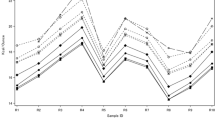Abstract
MILK of the rat contains up to 20 cer cent fat1, and the gastro-intestinal tract of infant rats absorbs fat more rapidly than that of adult animals2. The cells of the intestinal mucosa of infant rats after a meal contain much more neutral fat than those of adult animals where more ‘acid lipids’ are found3 (using nile blue). This, together with a lower intestinal esterase activity in infant rat intestine3, indicates a different absorption and perhaps transport of fat. Since fat transported via lymphatic pathways must pass through the lungs before entering the blood, it was thought pertinent to examine this organ histo-chemically during ontogeny of the rat.
This is a preview of subscription content, access via your institution
Access options
Subscribe to this journal
Receive 51 print issues and online access
$199.00 per year
only $3.90 per issue
Buy this article
- Purchase on Springer Link
- Instant access to full article PDF
Prices may be subject to local taxes which are calculated during checkout
Similar content being viewed by others
References
Glass, R. L. (dissertation, University of Minnesota, 1956).
Koldovský, O., Hahn, P., Jiránek, J., and Tintěra, J., Čs. fysiol., 8, 211 (1959).
Anisimova, E., Vacek, Z., Koldovský, O., and Hahn, P., Čs. fysiol., 8, 392 (1959).
Schrade, W., and Biegler, R., Klinische Wochenschrift, 34, 1247 (1956).
Author information
Authors and Affiliations
Rights and permissions
About this article
Cite this article
VACEK, Z., HAHN, P. & KOLDOVSKÝ, O. Role of the Lung in Metabolism of Fat during Ontogeny of the Rat. Nature 191, 85–86 (1961). https://doi.org/10.1038/191085a0
Issue Date:
DOI: https://doi.org/10.1038/191085a0
Comments
By submitting a comment you agree to abide by our Terms and Community Guidelines. If you find something abusive or that does not comply with our terms or guidelines please flag it as inappropriate.



